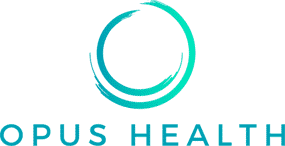We offer separate men’s and women’s drug and alcohol treatment programs and various types of Orange County addiction outreach options. Each uses the very latest in evidence-based treatment techniques.
At Opus, our residential treatment program stands as a beacon of comprehensive mental health care & substance abuse treatment. Through a blend of a structured and supportive living environment and personalized therapeutic services, individuals receive an intensive and all-encompassing level of care to guide them on the path to wellness.

We here at Opus, provide expert medical detoxification services in a safe and compassionate environment. Our dedicated team ensures a thorough and supportive detox experience, prioritizing the well-being and comfort of individuals seeking recovery.
We help adults overcome addiction through evidence-based, medically supervised treatment in Orange County, California. See how we align caring professionalism with a holistic recovery approach. Learn more about us.






All patients receive a full individualized treatment
24/7 on-site licensed medical staff available
Weekly on site doctor visits by a licensed physician
Opus Health is licensed and accredited by the department of healthcare services
Continuous family updates, support and guidance
Medication management and education by licensed physicians
All patients receive a full individualized treatment
24/7 on-site licensed medical staff available
Weekly on site doctor visits by a licensed physician
Opus Health is licensed and accredited by the department of healthcare services
Continuous family updates, support and guidance
Medication management and education by licensed physicians



The treatment experience differs for everyone, but that’s what makes it successful. We help adults overcome addiction through evidence-based, medically supervised treatment in Orange County, California. Our evidence-based treatment methods are designed to focus on each patient’s specific conditions, hopes, and goals.
When you enter Opus Health, you will be greeted by a member of our admissions team who will walk you through the process of starting your recovery. Our Costa Mesa rehab staff will begin with an assessment that will determine the course of treatment that needs to be taken to address your individual needs.
The length of time varies for each individual, depending on several key factors. Many residential rehab centers in Costa Mesa offer 30 days, 60 day and 90+ day programs. However, we prefer to work with you to chalk out your individual treatment needs and your treatment plan’s length.
At Opus Health, we are driven by the belief in the transformative power of healing and resilience. This belief guides our mission to provide compassionate, personalized care that supports every step of your journey toward well-being.


Take the first step by filling out the form below. All form submissions are 100% confidential and your policy could cover the complete cost of treatment.
Take the first step by filling out the form below. All form submissions are 100% confidential and your policy could cover the complete cost of treatment.

Opus Health LLC is Licensed and Certified by the Department of Healthcare Services
Program Number: 300028AP Expiration Date: 03/31/2024
Program Number: 300028CP Expiration Date: 05/31/2024
https://data.chhs.ca.gov/dataset/sud-recovery-treatment-facilities
Speak with our dedicated Recovery Advocates to find the right personalized treatment approach for you.
+1 (949) 787-3380
All calls are 100% free and confidential
